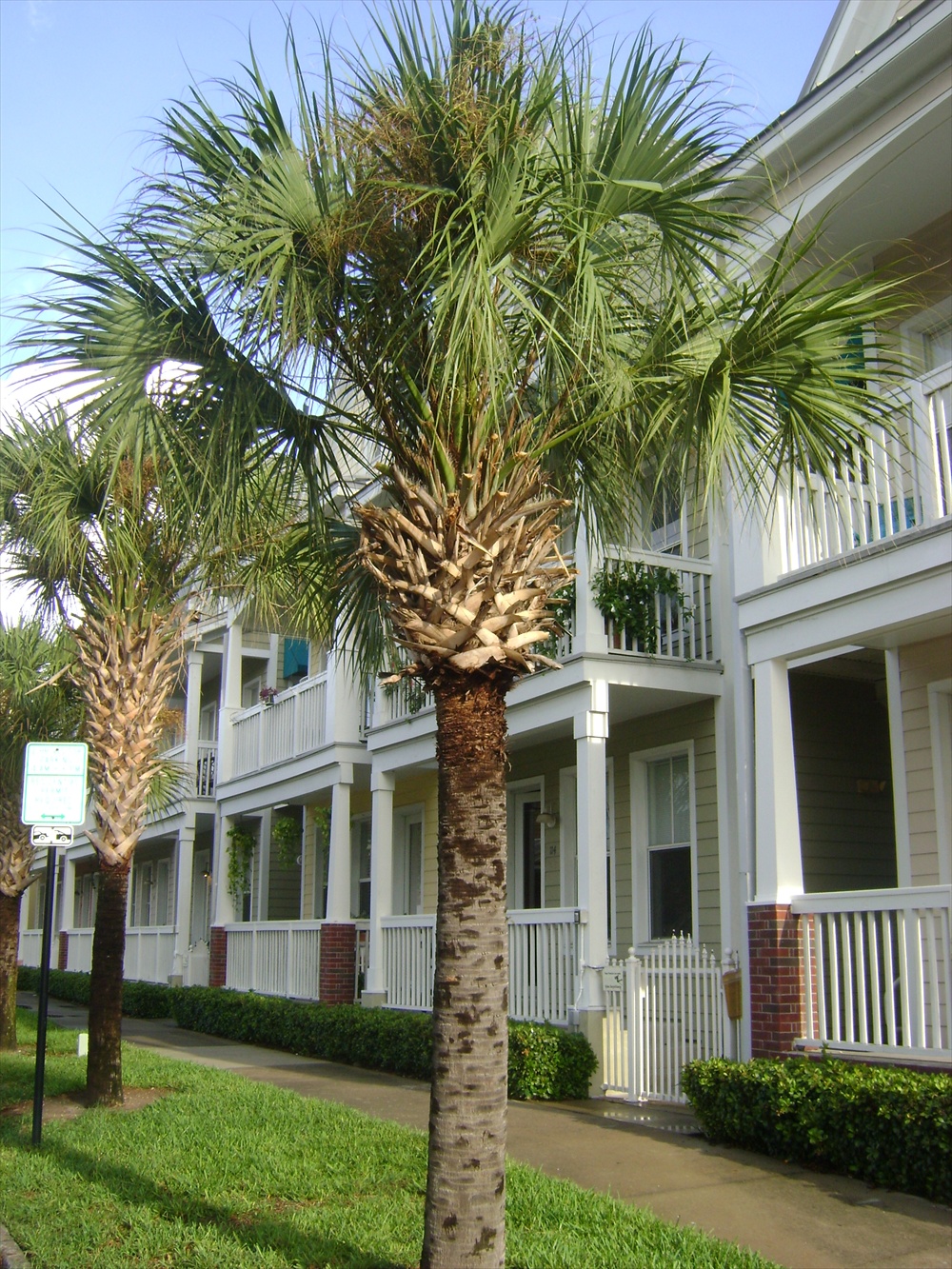Designated the state tree of Florida in 1953, the Sabal palm is also known as a cabbage palm because of its cabbage-like terminal bud. Young trees have rough trunks marked with old leaf scars in a crisscrossed pattern. Eventually these stubs fall away, and mature specimens have smooth, cement gray trunks.
The Sabal palm averages 50 feet in height. The fronds appear directly from the top of the tree and curve in a unique spherical shape. They are long, gray-green to greenish yellow depending on the specimen and location. The leaflets are typically center split and edged with yellow fibers.
In midsummer, the Sabal palm produces long flower stalks covered with pale yellow blossoms from within the crown. The fruit is small, black and pitted with shiny brown seeds. Birds and squirrels are frequent visitors when the Sabal palm is in fruit.
This Southern native enjoys full sun to partial shade and is highly adaptable to both wet and dry environments. Extremely tolerant of salt spray, Sabals do well in coastal areas. The protruding leaf scars of the Sabal palm are hospitable to ferns, orchids and hanging moss. These unexpected arrivals often transform a single tree into a tropical hanging garden.

